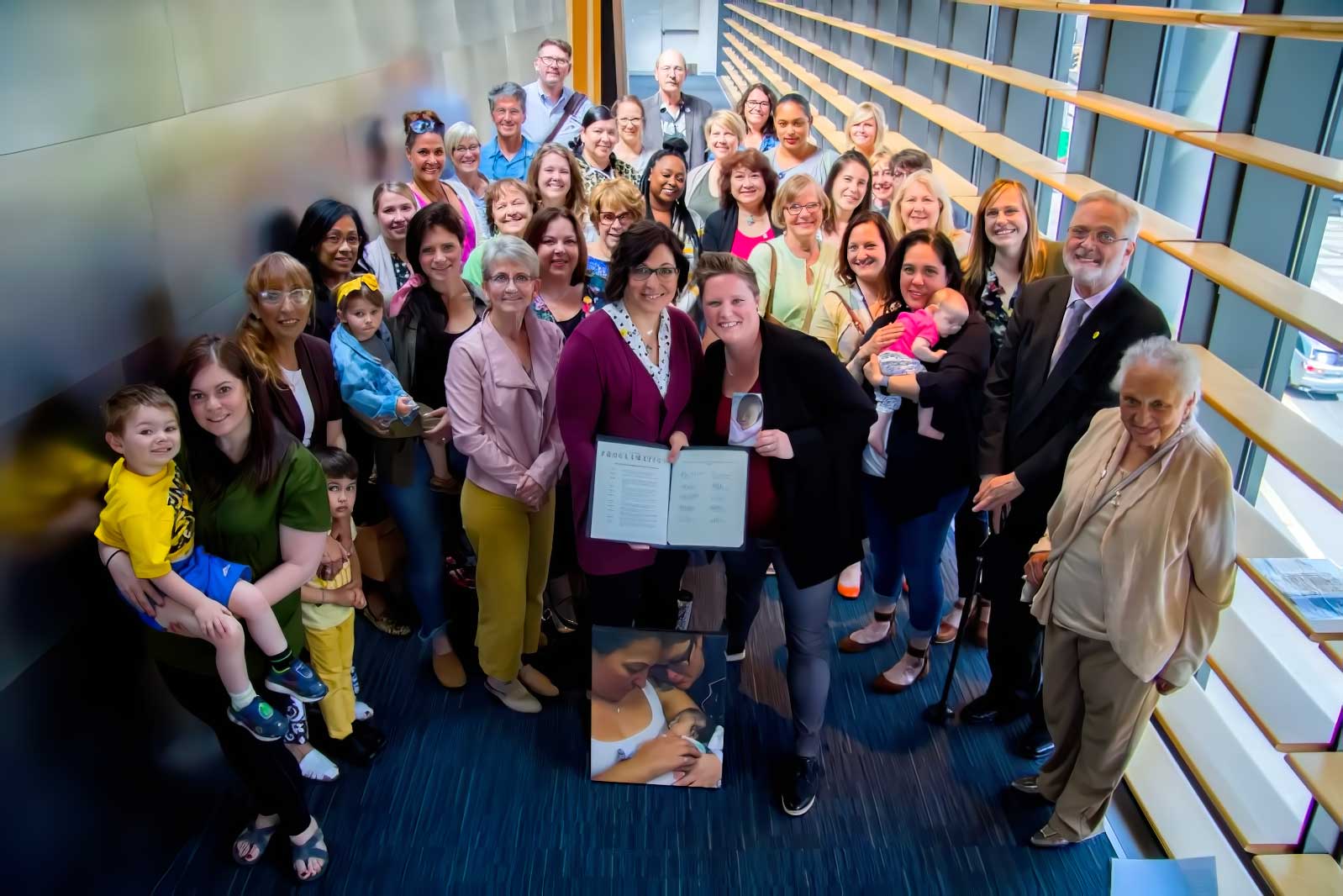As another decade comes to a close and Evermore marks its fifth year working to improve bereavement care in the United States, we have reason to celebrate 2019.
Here at Evermore, we made big strides toward building our team and raising awareness about the need to support grieving parents. Meanwhile, across the country, new initiatives and research moved forward the conversation about how to support the bereaved.
Evermore in 2019: Advocacy and awareness

- Julie Kaplow, PhD, ABPP (left)

- Wendy Lichtenthal, Phd
We were thrilled to add two renowned experts on grief and bereavement to our Scientific Advisory Council. Wendy Lichtenthal is director of the Bereavement Clinic at Memorial Sloan Kettering Cancer Center. Julie Kaplow serves as director of the Trauma and Grief Center at Texas Children’s Hospital.
At the same time, our burgeoning advocacy network began to focus on three priorities as we seek to push the needle forward on new policies and supports for those who are grieving. The advocacy network is working to:
-
- Increase research funding so we can better understand who is impacted and how to help.
- Grow family support programs across the country to meet families where they are, regardless of race, income or geography.
- Boost funding for professional education, development and support to ensure a more qualified, skilled workforce; bolster coping skills; and decrease high rates of suicide among these professionals who respond to traumatic events, like bereavement.
We also were laser focused on raising the national conversation about grief and bereavement. In November, in fact, the Wall Street Journal published Evermore Executive Director Joyal Mulheron’s letter to the editor about the need for companies to better accommodate grief.
“Job protection for bereaved parents seems reasonable,” she wrote in response to a story about how employees juggle work after a loved one dies. But, she pointed out, it’s not considered a qualifying event that allows for leave under the Family and Medical Leave Act.
As we work hard to improve the lives of those who are grieving, we’ve also been pleased to play even a small role in efforts around the country and world to help families cope with a death.
Bereavement Care in 2019: New support, vital research
As we focused on our own work at Evermore this past year, we also were thrilled to witness these notable steps forward in bereavement care that will only support our work to continue to push for more assistance for those who are grieving.
Bea’s Law passed in Seattle

In June, the Seattle City Council passed Bea’s Law, which extends paid family care leave benefits to city employees when their child dies. It is very likely the first paid bereavement law in the nation and a model for lawmakers elsewhere.
The ordinance is named after a city employee’s infant daughter, who died just 36 hours after being born. Bea’s mother was only able to take time off after her daughter’s death by borrowing paid leave from her co-workers. She brought the issue to the attention of city leaders, who made the bold move to make a change.
“Bea’s parents Rachel and Erin are honoring their daughter in such a powerful way. On behalf of bereaved parents everywhere, I thank them and Seattle’s City Council for drafting and passing a landmark law that can be an example for elected leaders across the nation,” Mulheron said at the time.
CuddleCot featured in New Amsterdam

In November, “New Amsterdam,” NBC’s popular hospital drama, showcased a product that’s changing the care system for stillbirth families — the CuddleCot. Developed by Flexmort, which is based in England, the CuddleCot has been on the market for about seven years. The device, which is small enough to fit inside a bassinet, works by continually pumping and cooling water underneath a body. The movement of the water and the cooling process drags away heat from the body, slowing down any change. It gives parents more time with their stillborn baby.
In an interview with Evermore, Steve Huggins, Flexmort’s commercial director and CuddleCot’s co-inventor, said he was thrilled for the opportunity to showcase what’s possible for parents grieving a stillbirth on TV.
“We are always pleased when the subject of stillborn is tackled in a TV show as it starts people talking about what unfortunately does happen,” Huggins told us. “We thought that the show dealt extremely well with the subject and showed how important it is that the mother has the choice to have time with the baby. Something like this really does let people know that this is totally acceptable and the options are readily available.”
FMLA bill wins bipartisan support

For years, two fathers — Kelly Farley and Barry Kluger — have been pushing lawmakers to approve the Sarah Grace-Farley-Kluger Act, which would update the Family and Medical Leave Act and allow parents to qualify for unpaid leave when a child, who is under the age of 18, dies. In February, for the first time in eight years since the bill’s original introduction, it received bipartisan support from both the U.S. House and the U.S. Senate.
We checked in with Farley and Kluger in September for an update. Said Kluger: “It’s not a sprint, it’s a marathon.”
Research sheds more light on the impacts of grief
Few want to dwell on death and dying, especially when a child is involved. Sadly, the funding and research required to study the impacts of death and grief on the living has been slow to come. But that’s starting to change. In the last year, researchers shed some important insights on death and grief and there’s more to come in 2020.
Research published in the October issue of Social Science & Medicine found that the death of a child has “lasting impacts” on parents. In fact, bereaved parents had a 32% higher rate of mortality than non-bereaved parents, according to the report.
And in June, research in the Journal of the American Medical Association noted a 30% spike in suicides in the United States, including troublesome increases among adolescents, in particular.
As we carry forward into a new decade, these data points will only help us as we continue to push for better policies, more support and increased visibility into an issue that touches us all.
As we look toward the next five years, we hope you will consider joining our movement, sharing our work or volunteering in your communities. To bring bereavement care to America, it will take every last one of us.

